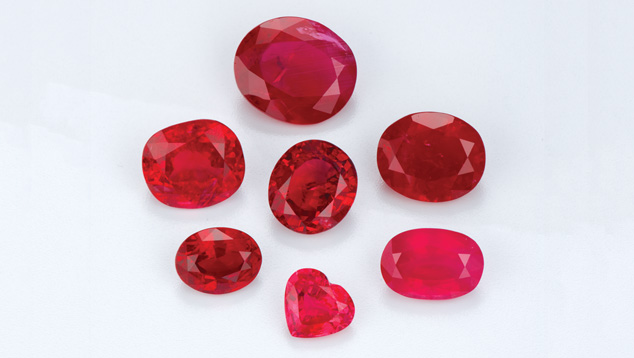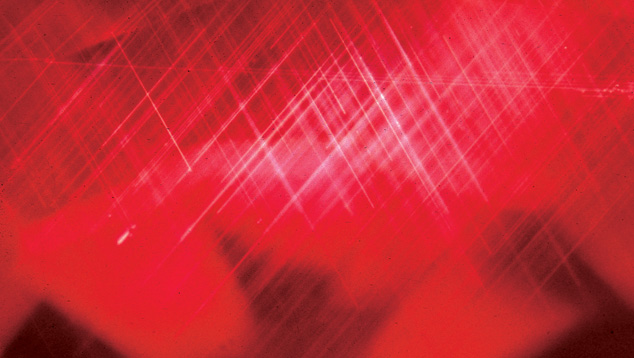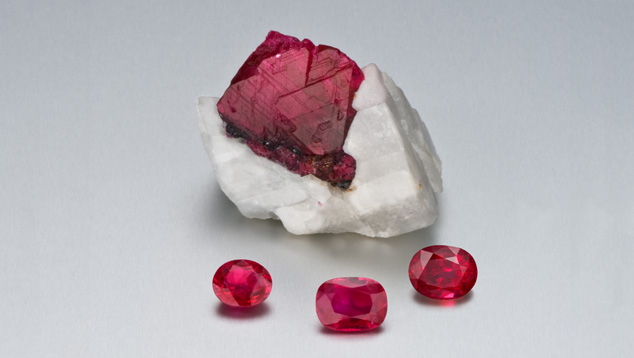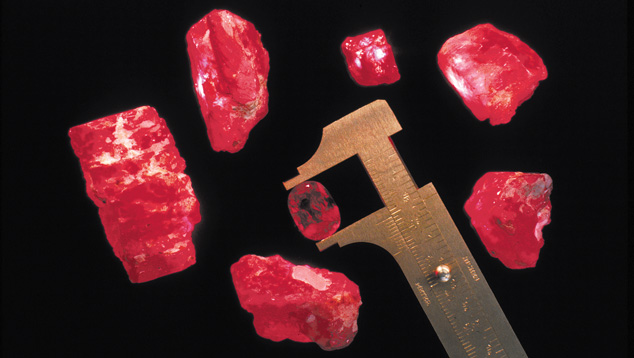
Privacy statement: Your privacy is very important to Us. Our company promises not to disclose your personal information to any external company with out your explicit permission.
+86-20-22883328
The price per carat of a ruby can increase significantly with stone size, especially for better quality rubies.
Ruby color

Color is the most important factor affecting the value of a ruby. The highest quality ruby colors are pure bright red to purplish red. In most markets, pure red rubies command the highest prices, while rubies with orange and violet flashes are of relatively low value. A good quality ruby should be neither too dark nor too light. If the color is too dark, it will affect the brightness of the gemstone. And if the color is too light, it may be considered a pink sapphire, even if the gem has a high chroma. That said, pink sapphires are also popular, and their prices are far more competitive than those of rubies. But in general, your favorite ruby color is the most valuable color.
Difference Between Pink Sapphire and Ruby
Some gem dealers argue over the border between rubies and pink sapphires. Historically, the word ruby has referred to different shades of red, and strictly includes pink. There are also cultural differences in the interpretation of ruby versus pink sapphire. In some gem-producing countries, such as Sri Lanka, pink ruby is traditionally considered a ruby, while in many consuming countries it is classified as a pink sapphire.
The GIA laboratory uses a group of controlled comparison stones called master stones to determine whether a certain corundum is a ruby. The laboratory grades the color master stones. The grading principle is that the red color of the gemstone must be the main color, and the gemstone can be called a ruby. Nonetheless, in the gemstone industry, personal perception can influence the determination of the dominant hue.
Burmese pigeon blood ruby
Historically, the term "pigeon's blood" has been used to describe a ruby red to purplish or pink red with a soft, sparkling red fluorescence.
These traditional color terms can create a picture, and people in the industry often use them to describe color. However, these words can be misleading when describing the true color of rubies.
Over time and years of practice, these trade terms can conjure up specific colors and qualities associated with a gemstone's origin. However, the qualities described may be representative of the origin, or represent the best gemstones of the origin.
Single-origin gemstones are never all the same color and quality. In fact, this descriptive industry term may represent only a small fraction of the region's extremely valuable gems.
New origins can yield rubies that are very similar to traditional origins, and may also yield rubies with a slightly different appearance but just as beautiful.
Clarity of Ruby

Industry insiders believe that rubies will inevitably have some inclusions, because there are almost no rubies without inclusions. The apparent degree of inclusions can determine the value of a ruby. Obvious inclusions, or inclusions that affect the clarity or brilliance of a ruby, can greatly reduce a ruby's value.
Large, visible inclusions under the table can greatly reduce the clarity, brilliance and value of the gemstone. Inclusions can also affect the robustness of a ruby. Significant fractures that extend to the surface may reduce the solidity of the gemstone.
One of the typical features of ruby clarity is the tiny mineral inclusions called needles. When the inclusions are rutile minerals and are in the shape of intersecting needles, the inclusions are called filaments. The needles may be short or long and slender, and may be closely intertwined.
Ruby sometimes also contains needles, small crystals, changing color gamuts, or fingerprint-like inclusions of other minerals.
In fact, certain inclusions may also enhance the gem's appearance. Rutile filaments scatter light and brighten some facets that would otherwise be too dark. This increases the softness of the color and allows for a more even color distribution on the crown of the ruby.
When the top surface of a gemstone is cut in an arc called a Cabochon, the intersecting needles create a star effect.
Cut of Ruby

The cut and proportions of rubies on the market are influenced by many factors. The crystal shape of a ruby determines its suitability for a particular cut. The most common ruby shape is a flat hexagon, but ruby crystals from some origins are elongated in shape.
Given the shape of these crystals, rubies are often cut in oval and cushion shapes, with brilliant-cut crowns with kite and triangular facets, and step-cut bases with concentric rows of rectangular or square carvings. noodle.
In addition to this, there are round, triangular, emerald-cut, pear-shaped and marquise-shaped rubies. But in large, high-quality rubies, these shapes are very rare.
Rough rubies are very expensive, so many cutters try to preserve the weight. For example, they might cut a flat rough ruby into a very shallow gem, so that light leaks out of the flat bottom, creating an unattractive see-through area called a window.
Pleochroism means that different directions of a crystal will show different colors. This is another factor that affects cut. The pleochroism of ruby is usually manifested as red to purplish red in one direction of the crystal and orange-red in the other direction. The cutter orients the table perpendicular to the length of the crystal to minimize orange-red. Even so, it is not always possible to adjust a ruby for the best color, as doing so may result in excessive weight loss.
Ruby size and weight

High-quality rubies weighing more than 1 carat are very rare, and commercial-quality rubies usually come in a variety of sizes. As the size of a ruby increases, so does its price per carat.

Privacy statement: Your privacy is very important to Us. Our company promises not to disclose your personal information to any external company with out your explicit permission.

Fill in more information so that we can get in touch with you faster
Privacy statement: Your privacy is very important to Us. Our company promises not to disclose your personal information to any external company with out your explicit permission.